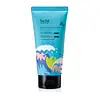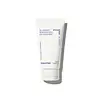What's inside
What's inside
 Key Ingredients
Key Ingredients

 Benefits
Benefits

 Concerns
Concerns

 Ingredients Side-by-side
Ingredients Side-by-side

Water
Skin ConditioningGlycerin
HumectantPotassium Cocoyl Glycinate
Coco-Betaine
Cleansing1,2-Hexanediol
Skin ConditioningPotassium Cocoate
EmulsifyingLauramidopropyl Betaine
CleansingAcrylates/C10-30 Alkyl Acrylate Crosspolymer
Emulsion StabilisingStellaria Media Extract
Skin ConditioningAlchemilla Vulgaris Leaf Extract
AntioxidantEquisetum Arvense Leaf Extract
AstringentUrtica Dioica Leaf Extract
Skin ConditioningAvena Sativa Kernel Extract
AbrasiveCalendula Officinalis Flower Extract
MaskingNepeta Cataria Extract
TonicRubus Idaeus Leaf Extract
Skin ConditioningBaptisia Tinctoria Root Extract
Skin ConditioningPotassium Hydroxide
BufferingSodium Chloride
MaskingEthylhexylglycerin
Skin ConditioningGlyceryl Oleate
EmollientCoco-Glucoside
CleansingButylene Glycol
HumectantTetrasodium EDTA
Malachite Extract
AntioxidantCitric Acid
BufferingCitrus Aurantium Dulcis Peel Oil
MaskingCitrus Aurantifolia Oil
CleansingPelargonium Graveolens Flower Oil
MaskingRosmarinus Officinalis Leaf Oil
MaskingLimonene
PerfumingCitronellol
PerfumingGeraniol
PerfumingCitral
PerfumingWater, Glycerin, Potassium Cocoyl Glycinate, Coco-Betaine, 1,2-Hexanediol, Potassium Cocoate, Lauramidopropyl Betaine, Acrylates/C10-30 Alkyl Acrylate Crosspolymer, Stellaria Media Extract, Alchemilla Vulgaris Leaf Extract, Equisetum Arvense Leaf Extract, Urtica Dioica Leaf Extract, Avena Sativa Kernel Extract, Calendula Officinalis Flower Extract, Nepeta Cataria Extract, Rubus Idaeus Leaf Extract, Baptisia Tinctoria Root Extract, Potassium Hydroxide, Sodium Chloride, Ethylhexylglycerin, Glyceryl Oleate, Coco-Glucoside, Butylene Glycol, Tetrasodium EDTA, Malachite Extract, Citric Acid, Citrus Aurantium Dulcis Peel Oil, Citrus Aurantifolia Oil, Pelargonium Graveolens Flower Oil, Rosmarinus Officinalis Leaf Oil, Limonene, Citronellol, Geraniol, Citral
Water
Skin ConditioningGlycerin
HumectantSodium Cocoyl Isethionate
CleansingHydroxypropyl Starch Phosphate
Diglycerin
HumectantLimonene
PerfumingPotassium Benzoate
PreservativeSodium Methyl Cocoyl Taurate
CleansingPotassium Cocoyl Glycinate
Potassium Cocoate
EmulsifyingLavandula Angustifolia Oil
MaskingButylene Glycol
HumectantAllantoin
Skin ConditioningCitric Acid
BufferingLinalool
PerfumingSodium Phytate
Citrus Aurantium Dulcis Peel Oil
Masking1,2-Hexanediol
Skin ConditioningVaccinium Angustifolium Fruit Extract
Skin ProtectingPanthenol
Skin ConditioningCaprylic/Capric Triglyceride
MaskingMaltodextrin
AbsorbentSaccharide Hydrolysate
HumectantPropanediol
SolventAcrylates/C10-30 Alkyl Acrylate Crosspolymer
Emulsion StabilisingPolyquaternium-67
Euterpe Oleracea Fruit Extract
Rubus Idaeus Leaf Extract
Skin ConditioningWater, Glycerin, Sodium Cocoyl Isethionate, Hydroxypropyl Starch Phosphate, Diglycerin, Limonene, Potassium Benzoate, Sodium Methyl Cocoyl Taurate, Potassium Cocoyl Glycinate, Potassium Cocoate, Lavandula Angustifolia Oil, Butylene Glycol, Allantoin, Citric Acid, Linalool, Sodium Phytate, Citrus Aurantium Dulcis Peel Oil, 1,2-Hexanediol, Vaccinium Angustifolium Fruit Extract, Panthenol, Caprylic/Capric Triglyceride, Maltodextrin, Saccharide Hydrolysate, Propanediol, Acrylates/C10-30 Alkyl Acrylate Crosspolymer, Polyquaternium-67, Euterpe Oleracea Fruit Extract, Rubus Idaeus Leaf Extract
 Reviews
Reviews

Ingredients Explained
These ingredients are found in both products.
Ingredients higher up in an ingredient list are typically present in a larger amount.
1,2-Hexanediol is a synthetic liquid and another multi-functional powerhouse.
It is a:
- Humectant, drawing moisture into the skin
- Emollient, helping to soften skin
- Solvent, dispersing and stabilizing formulas
- Preservative booster, enhancing the antimicrobial activity of other preservatives
Acrylates/C10-30 Alkyl Acrylate Crosspolymer is a synthetic polymer. It is used to thicken and improve the texture of products. Due to its properties, it can prevent water and oil ingredients from separating.
Butylene Glycol (or BG) is used within cosmetic products for a few different reasons:
Overall, Butylene Glycol is a safe and well-rounded ingredient that works well with other ingredients.
Though this ingredient works well with most skin types, some people with sensitive skin may experience a reaction such as allergic rashes, closed comedones, or itchiness.
Learn more about Butylene GlycolCitric Acid is an alpha hydroxy acid (AHA) naturally found in citrus fruits like oranges, lemons, and limes.
Like other AHAs, citric acid can exfoliate skin by breaking down the bonds that hold dead skin cells together. This helps reveal smoother and brighter skin underneath.
However, this exfoliating effect only happens at high concentrations (20%) which can be hard to find in cosmetic products.
Due to this, citric acid is usually included in small amounts as a pH adjuster. This helps keep products slightly more acidic and compatible with skin's natural pH.
In skincare formulas, citric acid can:
While it can provide some skin benefits, research shows lactic acid and glycolic acid are generally more effective and less irritating exfoliants.
Most citric acid used in skincare today is made by fermenting sugars (usually from molasses). This synthetic version is identical to the natural citrus form but easier to stabilize and use in formulations.
Read more about some other popular AHA's here:
Learn more about Citric AcidCitrus Aurantium Dulcis Peel Oil is oil from the peel of an orange fruit.
Limonene and linalool make up the majority of oils from citrus peels. Limonene has a "citrus" fragrance. Citrus peels also contain flavonoids, which have anti-inflammatory properties.
Citrus peel is also a rich source of flavonoids. Flavonoids are natural antioxidants and help protect your skin against damage. Flavonoids are a group of compounds naturally found in vegetables and fruits.
The term 'fragrance' is not regulated in many countries. In many cases, it is up to the brand to define this term. For instance, many brands choose to label themselves as "fragrance-free" because they are not using synthetic fragrances. However, their products may still contain ingredients such as essential oils that are considered a fragrance.
Learn more about Citrus Aurantium Dulcis Peel OilGlycerin is already naturally found in your skin. It helps moisturize and protect your skin.
A study from 2016 found glycerin to be more effective as a humectant than AHAs and hyaluronic acid.
As a humectant, it helps the skin stay hydrated by pulling moisture to your skin. The low molecular weight of glycerin allows it to pull moisture into the deeper layers of your skin.
Hydrated skin improves your skin barrier; Your skin barrier helps protect against irritants and bacteria.
Glycerin has also been found to have antimicrobial and antiviral properties. Due to these properties, glycerin is often used in wound and burn treatments.
In cosmetics, glycerin is usually derived from plants such as soybean or palm. However, it can also be sourced from animals, such as tallow or animal fat.
This ingredient is organic, colorless, odorless, and non-toxic.
Glycerin is the name for this ingredient in American English. British English uses Glycerol/Glycerine.
Learn more about GlycerinLimonene is a fragrance that adds scent and taste to a formulation.
It's found in the peel oil of citrus fruits and other plants such as lavender and eucalyptus. The scent of limonene is generally described as "sweet citrus".
Limonene acts as an antioxidant, meaning it helps neutralize free radicals.
When exposed to air, oxidized limonene may sensitize the skin. Because of this, limonene is often avoided by people with sensitive skin.
The term 'fragrance' is not regulated in many countries. In many cases, it is up to the brand to define this term. For instance, many brands choose to label themselves as "fragrance-free" because they are not using synthetic fragrances. However, their products may still contain ingredients such as essential oils that are considered a fragrance.
Learn more about LimoneneThis ingredient is the potassium salt of coconut acid. Coconut acid is created by mixing fatty acids from coconut oil.
It is an emulsifier, surfactant, and cleanser. According to a manufacturer, it contains glycerin.
Potassium Cocoyl Glycinate is an amino acid-based surfactant and cleaning agent. This ingredient can be derived from animals or plants. It may also be synthetically created from fatty acids of the coconut and glycine.
Potassium Cocoyl Glycinate is a gentle surfactant. Surfactants help gather the dirt, oil, and other pollutants from your skin to be rinsed away. It is a mild cleanser and naturally produces foam.
We don't have a description for Rubus Idaeus Leaf Extract yet.
Water. It's the most common cosmetic ingredient of all. You'll usually see it at the top of ingredient lists, meaning that it makes up the largest part of the product.
So why is it so popular? Water most often acts as a solvent - this means that it helps dissolve other ingredients into the formulation.
You'll also recognize water as that liquid we all need to stay alive. If you see this, drink a glass of water. Stay hydrated!
Learn more about Water